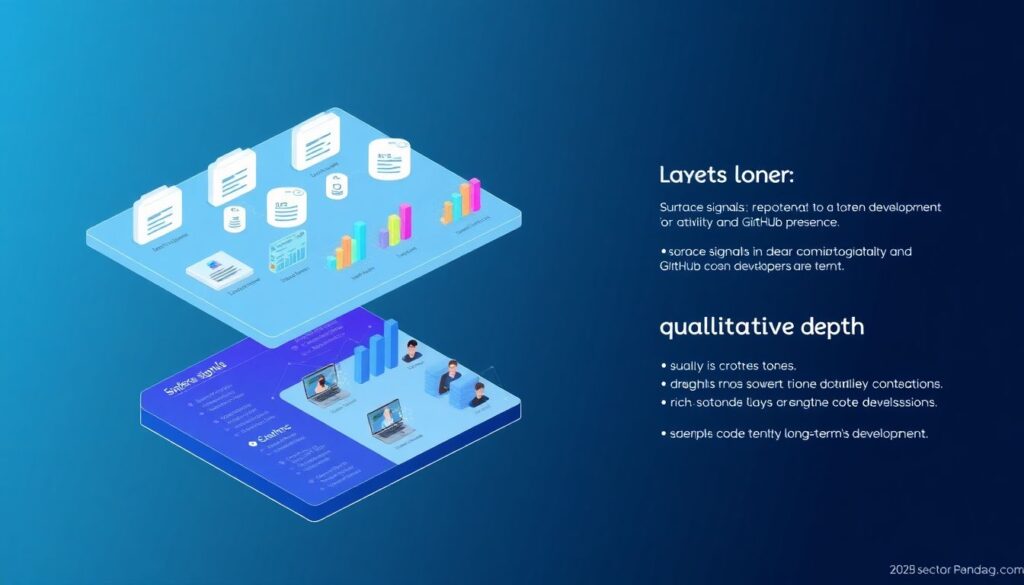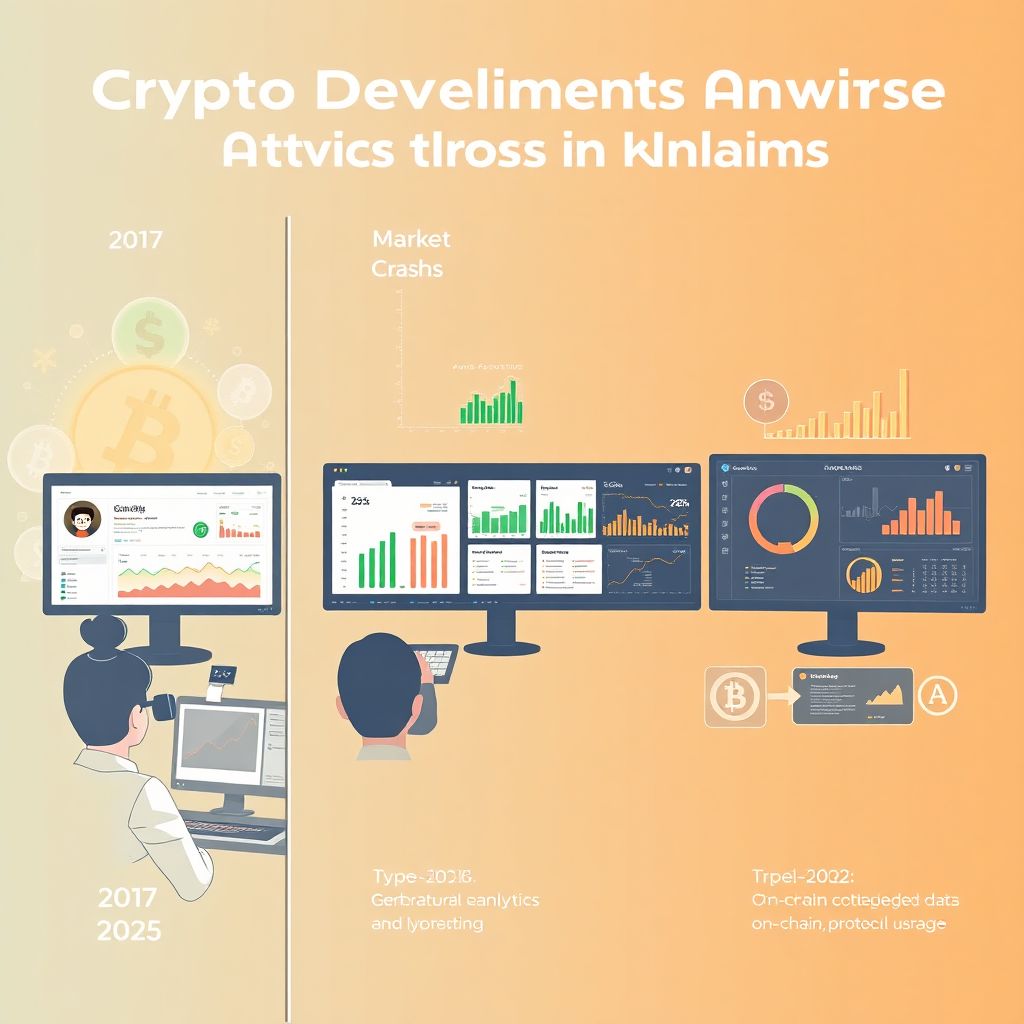Historical background

Back in the 2017 ICO boom, almost nobody cared about GitHub. Tokens pumped on marketing, flashy websites and vague roadmaps. Development “proof” was often a single empty repository and a promise that “code is coming soon”. After the 2018 crash, analysts slowly realised that real, verifiable work on open‑source repos is one of the few things that can’t be faked easily for long. By 2021–2022, serious investors started treating GitHub as part of their core crypto fundamental analysis tools, right next to tokenomics and liquidity. Fast‑forward to 2025, and development activity has become a default signal: research dashboards show commits, contributors and repo health; funds hire devs to review code; and projects are expected to maintain a transparent public presence instead of hiding everything behind closed corporate Git servers.
At the same time, teams have become more sophisticated. Some keep key components in private monorepos, some split code across multiple organisations, and others run multi‑chain stacks with different languages and frameworks. Because of that, a “GitHub check” is no longer just glancing at stars and forks. You need context: what exactly is open‑sourced, how the repos are structured, whether the roadmap matches the actual commits, and whether the public activity really reflects the core protocol work rather than just front‑end tweaks or hype‑driven refactors.
Basic principles

To understand how to evaluate a token’s development activity and GitHub presence in 2025, think in layers. First, you identify the *surface signals*: number of repos, commit frequency, programming languages used, and how many people are actually contributing. Then you move to *qualitative depth*: are these meaningful changes, like new features, audits, refactors and performance improvements, or just cosmetic edits and translations? On top of that, you add *organisational context*: does the project rely on a single “hero” developer, or is there a resilient, distributed team? Good best crypto research platforms now bundle these layers together: you can see charts of contributors over time, breakdowns by repo, and sometimes even automatic tagging of activity into categories like “smart contracts”, “infrastructure” or “docs”.
A practical rule of thumb is simple: you want to see consistent, explainable activity rather than random spikes. If a token announces a big mainnet upgrade, you should see a corresponding build‑up of commits, pull requests and testing branches in the weeks before, not a quiet desert suddenly followed by a marketing blast. That alignment between narrative and code is often a better signal than any single metric, because it shows the team ships what it talks about instead of just updating pitch decks and blog posts.
Implementation examples

Let’s walk through how to evaluate crypto projects before investing using development metrics. Imagine you’re reviewing a new DeFi protocol. First, you search for its GitHub organisation and cross‑check the link from the official site and docs to avoid fake repos. Next, you scan the main smart‑contract repository: how many commits in the last 3–6 months, how many unique contributors, and who reviews pull requests. Then, you look at issues: are bugs acknowledged, discussed and closed in a structured way, or are there months‑old security reports with no response? Add another layer by checking tags and releases – healthy projects bundle changes into versioned releases with clear changelogs, which is a sign of basic engineering hygiene rather than “move fast and break everything” chaos.
Now relate this to on-chain and developer activity crypto analytics. In 2025, you can open a dashboard that overlays GitHub pushes, new contracts deployed, upgrades executed and protocol usage. If the codebase is buzzing but the protocol is barely used, that may mean it’s still early stage; if usage is exploding while repos look abandoned, maybe most work moved off GitHub – or the project is coasting dangerously on technical debt. Combine these signals with independent GitHub analytics for cryptocurrency projects, which show “bus factor” (how many critical devs), code ownership drift, and even weekends vs weekdays activity patterns. You’re not just counting commits; you’re building a story about how the team actually works.
Common misconceptions
One of the biggest myths is that “more commits = better project”. In reality, commit counts can be gamed in minutes. Devs can split one change into dozens of tiny commits, or run automatic formatting on the entire codebase to inflate numbers. That’s why many advanced crypto fundamental analysis tools now de‑emphasise raw counts and instead measure things like complexity of changes, new lines in core logic files, test coverage evolution, and the ratio of code to documentation updates. Another misconception is that stars and forks reflect adoption; in 2025, those numbers are heavily skewed by airdrop hunters and automated scripts that star every repo in a niche. What matters more is whether serious, independent developers actually open issues, propose pull requests, and build integrations on top of the code.
It’s also tempting to think that every strong project must be fully open source. In practice, some protocols keep certain modules private for security or competitive reasons, while still exposing enough of the core to be auditable. If a team clearly explains what is closed and why, and independent auditors confirm the private code, that can still be acceptable. The red flag is not partial closed source; it’s opacity combined with marketing buzzwords and no technical accountability whatsoever.
Another frequent confusion comes from multi‑repo architectures. A casual investor might inspect one front‑end repo, see limited updates and conclude the project is “dead”, while all the heavy lifting happens in SDKs, indexers, smart contracts and tooling repos under a different organisation. Modern best crypto research platforms try to solve this by grouping repos by ecosystem and tagging them by function, but you still need to click through and verify: where are the contracts, where is the node software, where are the test suites? Only then does a picture of real development velocity emerge instead of a misleading snapshot based on a single repository.
Finally, remember that GitHub is only one piece of due diligence. Strong Git activity can’t compensate for broken tokenomics, hostile governance, or opaque treasury management. Likewise, some older, stable protocols naturally slow down development because they’re battle‑tested and don’t need constant changes. The art in 2025 is to put GitHub analytics for cryptocurrency projects into context: match code history with whitepaper promises, roadmap milestones, on‑chain behaviour and community governance. When those layers line up, development metrics stop being vanity data and turn into one of the most reliable signals you have in a noisy market.

